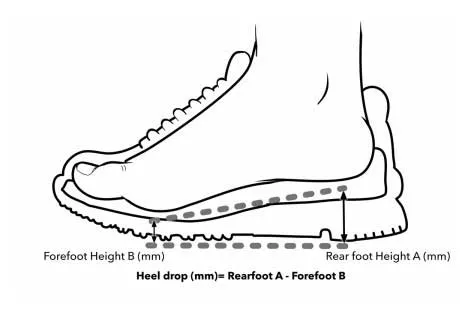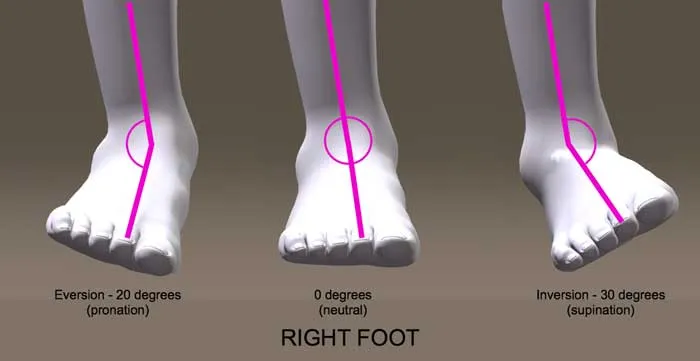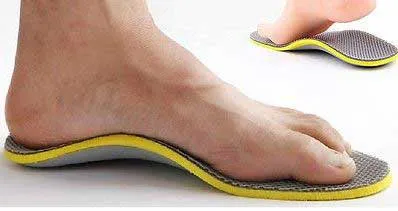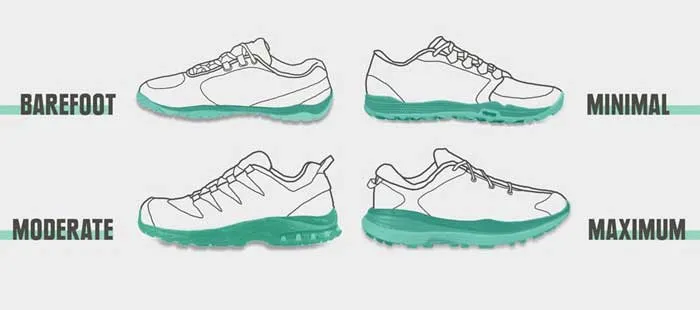Which shoes should I pick..? There, I said it… BAM! Discussion potentially leading to argument… “MAXIMALIST!” “NO, MINIMALIST!” “SUPINATION!” “PRONATION!” “OTHER RANDOM RUNNING SHOE TERMS!!!”
There is so much nonsense in the shoe community now-a-days, it’s not even funny. How do you pick out your shoes? Is it feel? Stability level? Simply whatever is the “hip and new” minimalist or maximalist shoe? Whatever your running idol is wearing at the time? Or a certain brand-name? Whatever it is, I am not judging, but I encourage you to use a rational thought process when deciding.
There are so many things to take into consideration when deciding what shoe to wear for the next 200-500+ miles. Shoe structure is very complex and usually requires a bio-mechanics knowledge base to understand to the fullest. When looking at shoe structure it is important to consider: weight, stack height, heel-toe-differential or “heel-drop”, the upper, the sole/tread, arch support, seams vs. seamless, flexibility, amount of cushioning, type of cushioning, toe-box width, narrow vs. wide, ankle support, and other materials. I’m probably missing some, but you get the point, it’s complicated.
I honestly believe that you need to try a substantial amount of shoes to figure out what works for you, but many people believe one-type of shoe is the “go-to shoe” and “ultimate-fix” for any ailment you may be suffering from. This concept is flawed due to the uniqueness of running gait and specific physiological characteristics we all possess.
If you walked into a running store, they would insist they analyze your gait. I can tell you right now, that these [mostly] high-school and college students don’t know what they’re looking for or talking about. I have a bachelor’s degree in Exercise Physiology (Kinesiology/Biomechanics involved) and a Doctoral degree in Physical Therapy and I can tell you that it is not that simple.
It takes specific and proper training backed by a profound knowledge base of anatomy/physiology, and kinesiology, not to mention a substantial time in a clinic practicing in order to properly evaluate gait. That’s just talking about walking; running gait is faster and usually requires video-analysis in order to properly catch each “gait-deviation”, followed-up by investigation to find the cause with a research-backed treatment approach to fix it. With that in mind, I hope to educate whoever reads this article on basic components that they should be aware of when picking their running shoes.
Heel-Toe Offset A.K.A. “drop” or “differential”

Many of us know that a lower heel-drop is usually associated with a more minimal shoe, and conversely. But why? Yes, running barefoot is equivalent to running with “zero-drop”, but what does it mean? As you can see in the above picture, if you take the stack-height of the heel and forefoot parts of the shoe and subtract them, you get the “heel-drop”.
So obviously, with a higher heel-drop your foot will be slightly pointing down while standing still. This concept is important because it directly relates to the position of your Achilles Tendon. With a higher “drop” shoe, your Achilles Tendon will be in a shortened position. This relates to the flexibility of your Achilles Tendon. I will use a short example of why this is important.
Tony Krupicka (if you don’t know who he is, go look him up ASAP) was leading the Ultra-Tour du Mont Blanc in 2013 more than half-way through [arguably] the world’s most competitive/hardest mountain ultramarathon, Tony had to DNF the race due to Achilles Tendon issues. Before Tony DNF’d, he changed his shoes. Why? Tony is known for being a “front-man” in the minimalist world, but this day he switched to shoes with a higher heel-drop. He did this to off-set stress on his Achilles Tendon. He was able to hobble a couple more miles before DNFing. So basically, if you have touchy Achilles, stay away from zero-drop shoes before formally addressing the Achilles issues.
“Drop” also affects the way we strike our foot onto the ground. The higher the heel-drop the more apt we are to heel-strike. Heel-strike is a whole other controversial topic that I’m not going to get into right now, but basically, you don’t want to force a heel-strike because it is inefficient. So when looking at heel-drop for new shoes, take into consideration the effect on the Achilles Tendon and the effect on foot-strike.
Sup, pro?

Another thing that comes up when looking into shoes is pronation. Pronation refers to the motion of the forefoot rolling inward during gait. Too many people out there give pronation a bad connotation. Pronation is normal and REQUIRED for normal gait. Pronation and supination have specific functions in order to produce healthy gait. When the foot strikes the ground, the foot pronates making the foot more pliable, allowing for force-absorption. As the body rolls over the foot and prepares for take-off, the foot then rolls into supination, making the foot a rigid lever for force production.
What people mean to say is “overpronation is bad”. Overpronation may be more of a concern but is still over-hyped.
“Most studies have found no relationship between injury and amount of pronation, and those that have found a relationship reported that the link was weak.
— British Journal of Sports Medicine
There is always someone who swears by something, and there happen to be a lot of people who take “pronation-control” seruously. But there is simply not enough powerful evidence in research to suggest we should. Try some shoes, see what works for you, but start with something neutral.
Arch You Going to use Inserts?

Shoes already come with inserts, so why are we adding another $50+ purchase onto our already $100-$150 shoe purchase? Sometimes even $400-$600 for custom fitted orthotics. Arch supports can be a touchy subject. Unlike overpronation, flat arches are more visible and easily detected.
If you can’t tell by just looking, a simple “wet-test” can help you determine the height of your arches. Structurally, the arch of the foot (the medial-longitudinal arch) performs a vital role in shock-absorption during walking, running, and jumping. If your arch is too high or too low, it can be offsetting forces to other structures of the foot, potentially leading to injury. A faulty arch can also cause improper foot motions during gait that can become destructive.
More people have flat arches than arches that are too high. So, how do we fix this? Stick something underneath the flat and weakened arch to support it, right!? Maybe not. Sticking supports under your arches can make your arch weaker in the long run (no pun intended). A faulty arch needs to be stressed in appropriate doses so that it can adapt and strengthen.
The posterior tibialis muscle functions as our “natural arch support”. Runners should attempt to strengthen this muscle before going straight to inserts and possibly making the situation worse. Once again, there are people who swear that inserts have worked for them, but we are all different. Looking at the research, there is no concrete evidence that inserts improve running gait quality or reduce occurance of running injuries. If you are looking for longevity in this sport, I would not rush to a “quick-fix”.
Quit Cushion my Buttons

With the emergence and popularity of Hoka One One, other companies have been erratically trying to replicate the concept. Didn’t we just have a minimalist obsession yesterday? Christopher McDougal is sitting around thinking “Darn it! I was THIS CLOSE to ruling the WORLD!”. I thought barefoot was the end-all fix for everything!? Guess not. People are claiming the same effects from using maximum cushion shoes, just as the barefooters do.
Let’s explain the purpose of maximum cushion. Simply comfort, and force absorption. The more soft material underfoot, the more forces will be dissipated before they reach your body. Sound awesome? Well, there are some draw-backs and they aren’t minor. First off, more material means added weight. More weight means more effort required to move your feet. These companies have tried to make up for this by adding “rocker-bottom technology” (making it easier to translate the foot forward) and simply using very light material such as EVA Foam.
There are still other concerns to consider with maximally cushioned shoes. What about ankle rolls? With a higher “stack-height” from maximal cushioning, people become weary of rolling their ankles. This is definitely something to watch out for, but maximalist companies attempt to decrease ankle rolling risk by increasing the ground-contact area of the shoe.
With a larger base of support, it is harder to tip over. Another concern is that runners are more encouraged to aggressively heel-strike since there is all that “fluff” underneath. Like I mentioned earlier, aggressive heel-striking usually occurs far in front of the body, outside of your base of support. The ground-reaction forces will be aiming in the opposite direction you are heading, leading to an inefficient “braking-force” that will inevitably slow you down.
Quick-tip: shortening your stride (increasing your cadence) will help you strike your foot underneath your body, resulting in a more efficient running gait-pattern.
Wrapping it Up
Now you have the knowledge to enter a running store and decide for yourself which shoe to try next. And that’s the important part, to try, a lot of shoes, until you find what works for you. Not to forget other factors that also come into play when picking shoes like aesthetics, price, durability, and quality. Lastly, if you find a shoe that works for you, keep buying it, your search is over, don’t torture yourself.

